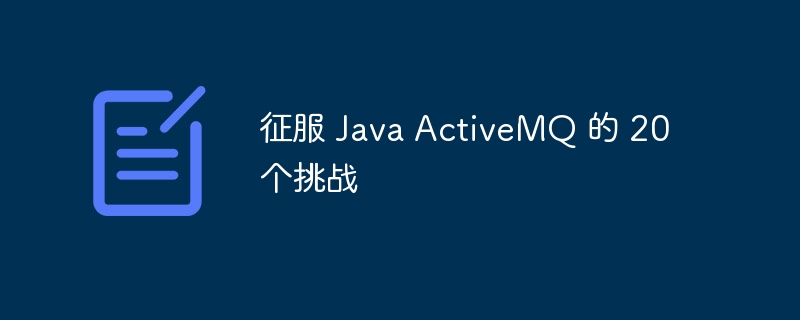

php editor Baicao has carefully compiled a guide "20 Challenges to Conquer Java ActiveMQ", which provides problem-solving methods for developers who want to learn and apply Java ActiveMQ in depth. . Through the guide, readers can master the skills to solve various challenges, improve their understanding and application capabilities of Java ActiveMQ, and help developers better deal with problems that may be encountered in actual development.
1. Choose the right MQ provider
2. Managing reliability in distributed systems
3. Optimize performance and scalability
4. Handling high-latency messages
5. Ensure secure communication
6. Integration with other systems
7. Management message reordering
8. Handling dead letter messages
9. Monitoring and Troubleshooting
10. Message discarding and retransmission
11. Message duplication
12. Message sequence
13. Message size limit
14. Message validity
15. Throughput and Latency Tradeoff
16. Queue management
17. Topic and publish subscription
18. Clustering and fault tolerance
19. MQ in the cloud
20. Other challenges
The above is the detailed content of 20 Challenges to Conquer Java ActiveMQ. For more information, please follow other related articles on the PHP Chinese website!
 What is a servo motor
What is a servo motor
 Introduction to SEO diagnostic methods
Introduction to SEO diagnostic methods
 What does data encryption storage include?
What does data encryption storage include?
 What are the main differences between linux and windows
What are the main differences between linux and windows
 A memory that can exchange information directly with the CPU is a
A memory that can exchange information directly with the CPU is a
 How to open mds file
How to open mds file
 Change word background color to white
Change word background color to white
 What are the development tools?
What are the development tools?




